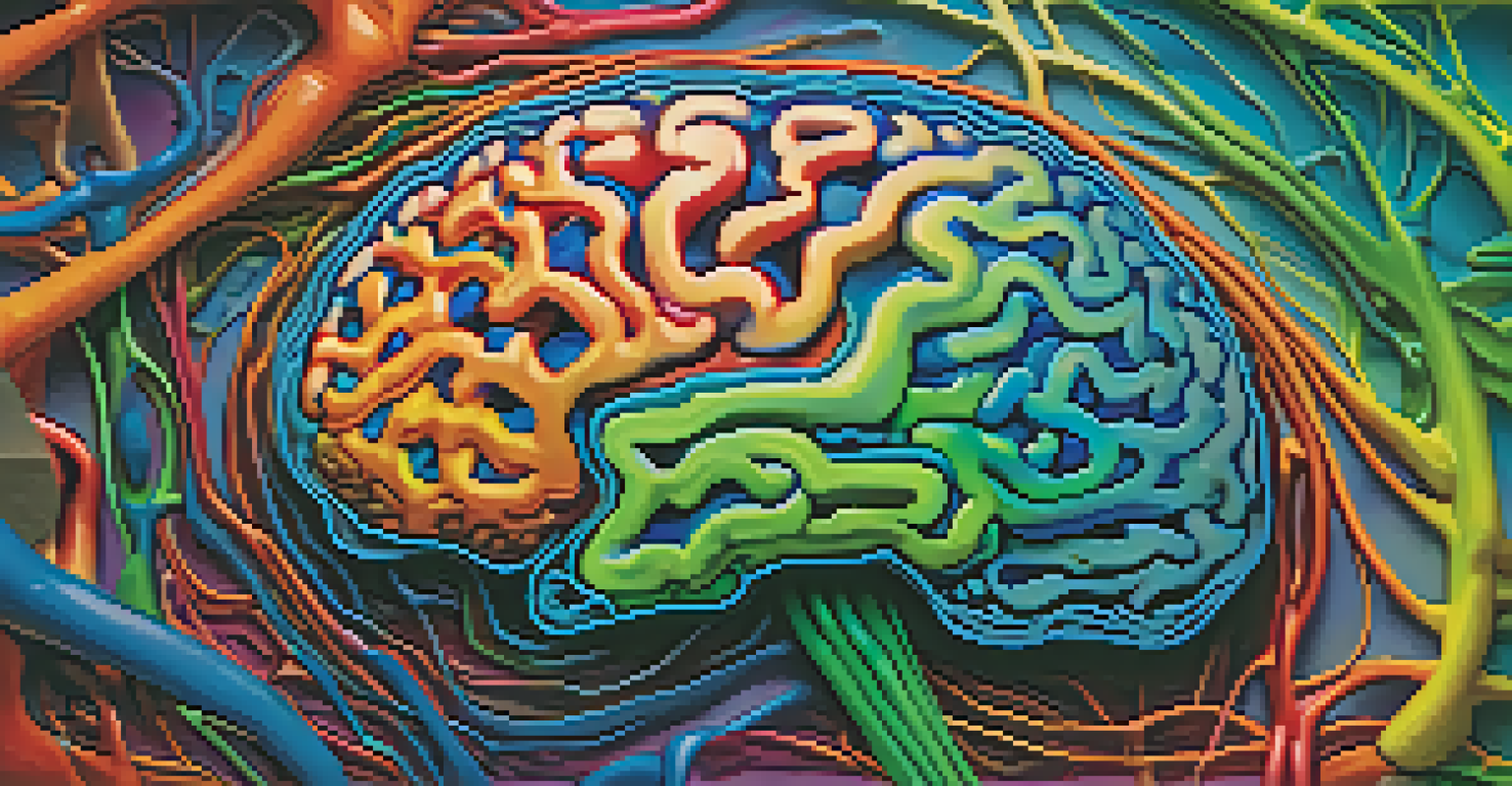The Science Behind Hallucinogens and Learning Enhancement

Understanding Hallucinogens and Their Effects
Hallucinogens are substances that alter perception, mood, and cognitive processes. Common examples include LSD, psilocybin, and mescaline. These compounds can lead to vivid visual or auditory experiences, often referred to as 'trips'. Understanding how they affect the brain is crucial for exploring their potential benefits.
The greatest discovery of my generation is that a human being can alter his life by altering his attitudes.
When ingested, hallucinogens interact with neurotransmitter systems, particularly serotonin receptors. This interaction can enhance neural connectivity, which is believed to play a role in creativity and problem-solving. By altering our perception, these substances may help us think outside the box, which can be beneficial for learning.
Despite the potential upsides, it's essential to approach hallucinogens with caution. Their effects can be unpredictable and vary significantly between individuals. Therefore, while they may enhance learning for some, they might also lead to anxiety or confusion for others.
The Role of Neuroplasticity in Learning
Neuroplasticity is the brain's ability to reorganize itself by forming new neural connections. This process is fundamental for learning and memory, enabling us to adapt to new experiences. Hallucinogens have been observed to promote neuroplasticity, which may lead to enhanced learning capabilities.

Research indicates that substances like psilocybin can increase the production of brain-derived neurotrophic factor (BDNF), a protein essential for the growth and survival of neurons. Higher levels of BDNF are linked to improved learning and memory. This suggests that hallucinogens might create an environment conducive to learning.
Hallucinogens Enhance Neuroplasticity
These substances may promote brain adaptability, potentially leading to improved learning and memory.
However, the relationship between neuroplasticity and hallucinogens is still being studied. While some findings are promising, more research is needed to fully understand how these substances can be used safely and effectively in educational contexts.
Potential Benefits for Creative Problem-Solving
One of the intriguing aspects of hallucinogens is their potential to boost creativity. When our minds are exposed to new and altered perspectives, we may find innovative solutions to problems. This creative enhancement can significantly benefit learning, especially in fields that require out-of-the-box thinking.
Creativity is seeing what others see and thinking what no one else ever thought.
For instance, individuals who have used hallucinogens often report experiencing profound insights and connections that they might not have noticed before. These insights can lead to breakthroughs in understanding complex subjects or solving intricate problems. Imagine staring at a puzzle and suddenly having the pieces fall into place in a new way.
Nevertheless, it's important to remember that creativity isn't solely dependent on hallucinogens. Traditional methods such as brainstorming, collaboration, and diverse learning experiences can also foster creative thinking. Hallucinogens could simply be one tool among many in the quest for enhanced learning.
Exploring the Therapeutic Potential of Hallucinogens
Recent studies have turned the spotlight on the therapeutic potential of hallucinogens. Researchers are investigating their use in treating conditions like PTSD, depression, and anxiety. These mental health issues often impede learning and cognitive function, so addressing them could indirectly enhance educational outcomes.
In therapy sessions, hallucinogens can provide patients with new perspectives on their experiences. This shift in mindset can lead to breakthroughs that facilitate learning and personal growth. For instance, overcoming past traumas may open up pathways for more effective learning and engagement.
Creativity Boost Through New Perspectives
Hallucinogens can facilitate innovative problem-solving by allowing individuals to see connections they might otherwise miss.
However, the therapeutic use of hallucinogens remains controversial and is subject to strict regulations. As research continues, it's vital to establish safe and effective protocols for their use in therapeutic and educational settings.
Challenges and Risks of Using Hallucinogens
While hallucinogens show promise for enhancing learning, they also come with risks. The unpredictability of their effects can pose challenges, as not everyone reacts the same way. Factors such as dosage, individual psychology, and environment can heavily influence the experience.
Moreover, there's a risk of developing psychological dependencies or experiencing adverse reactions, such as anxiety or paranoia. These negative effects can derail the learning process rather than enhance it, making it crucial to approach their use with caution and respect.
To mitigate these risks, ongoing education about the effects of hallucinogens is essential. Understanding both the potential benefits and the dangers can help individuals make informed decisions about their use in learning contexts.
The Future of Hallucinogens in Education
As research into hallucinogens continues to grow, their potential role in education becomes increasingly relevant. Educators and researchers are beginning to explore how these substances can be integrated into learning environments to enhance creativity and retention. This could lead to a new frontier in educational methodologies.
Imagine a classroom where students engage with hallucinogens in a controlled, safe environment, fostering deeper understanding and connection to the material. While this idea may seem far-fetched, the concept is being explored in various academic circles. Careful planning and research would be necessary to implement such programs responsibly.
Therapeutic Uses for Mental Health
Research suggests that hallucinogens may be effective in treating mental health conditions, which could indirectly enhance learning.
However, any future applications of hallucinogens in education must be approached with ethical considerations and scientific rigor. Balancing the exploration of their benefits with safety and legality will be paramount in shaping how these substances are viewed in the educational landscape.
Conclusion: Weighing the Pros and Cons
The relationship between hallucinogens and learning enhancement presents a fascinating area of exploration. While there are compelling arguments for their potential benefits in creativity, neuroplasticity, and therapeutic contexts, significant challenges and risks must be addressed. Balancing these aspects is crucial for a comprehensive understanding.
As we continue to learn more about the effects of hallucinogens on the brain, it’s important to foster an open dialogue about their implications. This includes considering both the scientific evidence and the personal experiences of those who have used these substances for learning purposes.

Ultimately, the journey into the world of hallucinogens and learning enhancement may lead us to new insights about human cognition and creativity. As with any tool for learning, the key lies in responsible use and ongoing research.